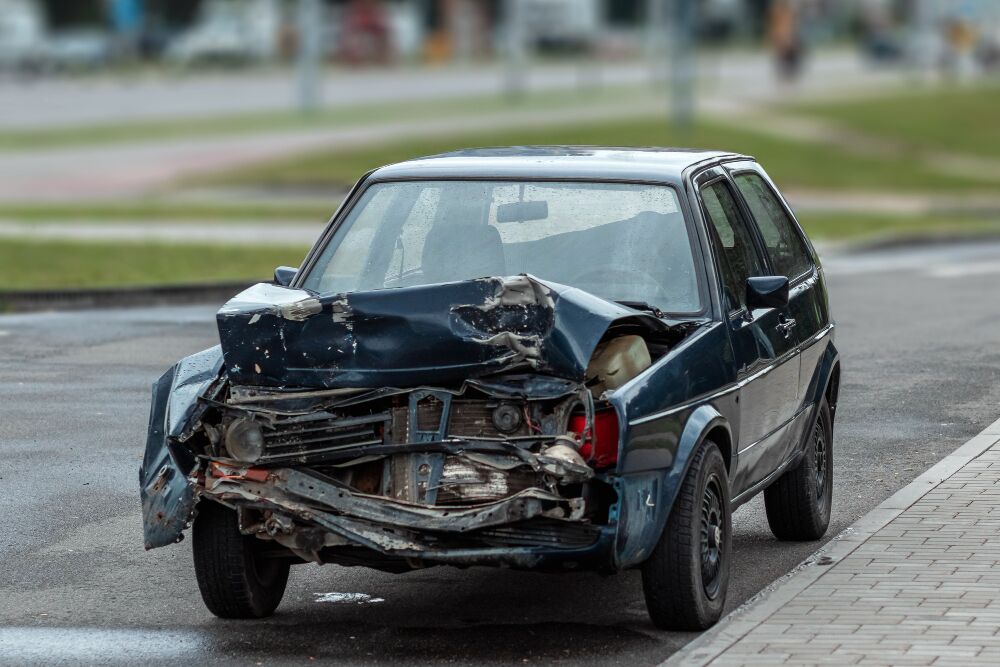Vehicle accidents are a common occurrence on our roads, with millions happening each year worldwide. While some crashes may seem minor, even small incidents can have serious consequences. The hidden dangers of vehicle accidents often go beyond the obvious damage to vehicles or the immediate injuries to those involved. Understanding these risks is crucial not only for staying safe behind the wheel but also for recognizing the long-term impact that a vehicle accident can have on a person’s life.
1. Physical Injuries: More Than Meets the Eye
When it comes to vehicle accidents, the first concern is often the physical harm inflicted on the drivers and passengers. While some injuries are immediately apparent, such as broken bones or cuts, others may not show up right away. Whiplash, for example, is a common yet often overlooked injury that occurs when the head and neck are jerked forward and backward during a collision. It can result in neck pain, headaches, and stiffness, sometimes leading to long-term discomfort or chronic pain.
Other hidden injuries, like internal bleeding or organ damage, can take hours or even days to manifest. These injuries may not be visible but can be life-threatening if left untreated. A delay in seeking medical attention could result in complications or even death. This is why it’s essential to always seek medical care after an accident, even if you don’t feel injured immediately.
2. Psychological Effects: The Emotional Toll of a Crash
While physical injuries are often the focus after a vehicle accident, the psychological effects can be just as significant. Survivors of car accidents often face emotional challenges, such as anxiety, depression, or post-traumatic stress disorder (PTSD). These psychological wounds may not be as visible, but they can deeply affect a person’s well-being.
For some individuals, the trauma of being involved in a crash can lead to a fear of driving, known as vehophobia. This can make it difficult to resume normal life, affecting work, social activities, and independence. Others may experience flashbacks, nightmares, or heightened anxiety when they are in or around vehicles. It is vital to acknowledge and treat these emotional scars, as they can linger for much longer than physical injuries.
3. Financial Burdens: More Than Just Repair Costs
A vehicle accident can result in significant financial strain. The immediate costs of vehicle repairs, medical bills, and insurance premiums are often the first expenses that come to mind. However, the hidden financial dangers are much deeper. For example, if someone is seriously injured in a car accident, they may face months or even years of medical treatment, rehabilitation, or long-term care. This can quickly add up to thousands of dollars in medical costs, many of which might not be fully covered by insurance.
Moreover, accidents can lead to lost wages if the injured person is unable to work due to their injuries. This loss of income can disrupt a household’s financial stability, leading to further stress and hardship. Even when insurance covers some of the costs, many drivers find that their premiums increase after an accident, further adding to their financial burden.
4. Legal and Liability Issues: The Complex Aftermath
Following a vehicle accident, the legal challenges can be daunting. Determining fault in many cases is not always clear-cut, and even if you are not responsible, you may still face legal action, particularly if the other driver or their insurance company contests liability. Navigating insurance claims, consulting with lawyers, and attending court hearings can be both time-consuming and costly.
Moreover, if the accident leads to serious injury, burns, or death, the legal complexities increase significantly. In such cases, lawsuits for medical malpractice, personal injury, or wrongful death can extend for years, leaving both sides emotionally drained and financially burdened. This is especially true in accidents involving serious burns or explosions, where a specialized explosion and burn accident lawyer may be necessary to handle the unique challenges involved. The aftermath of an accident extends far beyond the crash itself; it often involves prolonged legal battles that can last well after the initial incident.
5. Impact on Future Driving Habits: Risk of Recurring Accidents
One of the hidden dangers of vehicle accidents is how they can affect a person’s future driving behavior. Drivers who have been in accidents may develop habits or mindsets that increase their risk of future crashes. For example, some accident survivors become overly cautious or hesitant behind the wheel, while others may adopt a reckless attitude, feeling invincible or detached from the dangers of driving.
Furthermore, someone who has been involved in an accident may be more prone to taking risks, such as speeding or engaging in distracted driving, in an attempt to regain control over their driving environment. These shifts in behavior can make it more likely that they will be involved in another accident, creating a dangerous cycle.
6. The Ripple Effect: Impact on Families and Communities
The dangers of vehicle accidents extend beyond just the individuals involved. Accidents can have a profound effect on families and communities. A serious injury or death from a crash can change the course of an entire family’s life. Loved ones may need to provide caregiving support, face financial hardships, or cope with the loss of a family member. The emotional and financial consequences can ripple through communities, affecting not just the families but also the workplace, schools, and local organizations.
In Conclusion
The hidden dangers of vehicle accidents are far-reaching, often extending well beyond the immediate aftermath of a crash. From physical injuries that take time to heal to psychological scars that may persist long after the event, the risks of vehicle accidents should never be underestimated. The financial burdens, legal complexities, and the impact on families and communities further demonstrate how profound the consequences can be. By understanding these hidden dangers, we can take better precautions, promote road safety, and ensure that those affected by accidents receive the support they need to recover.




